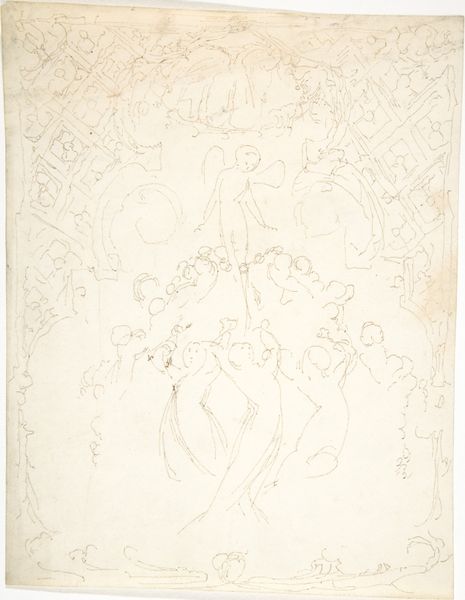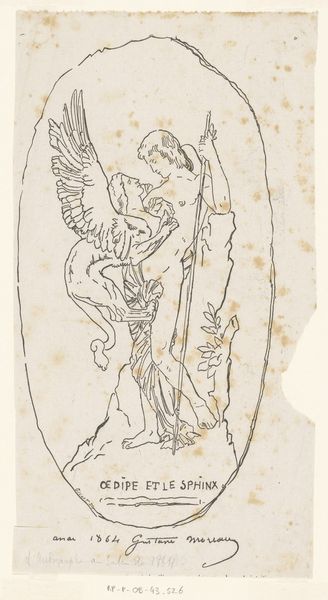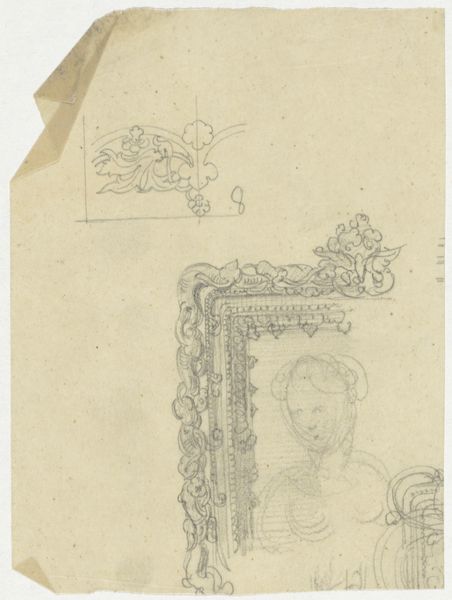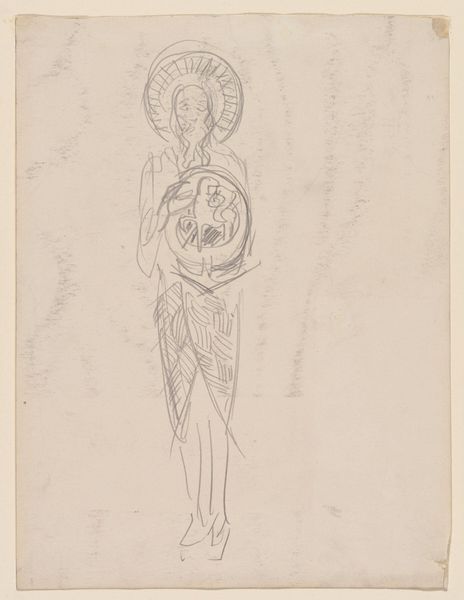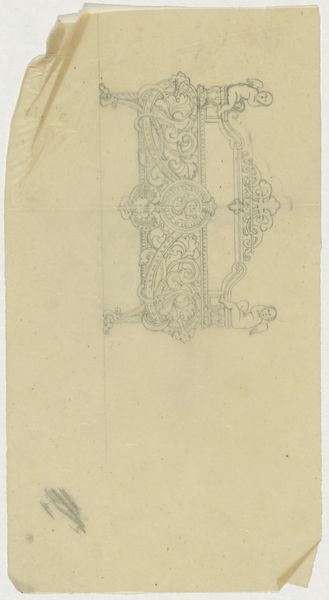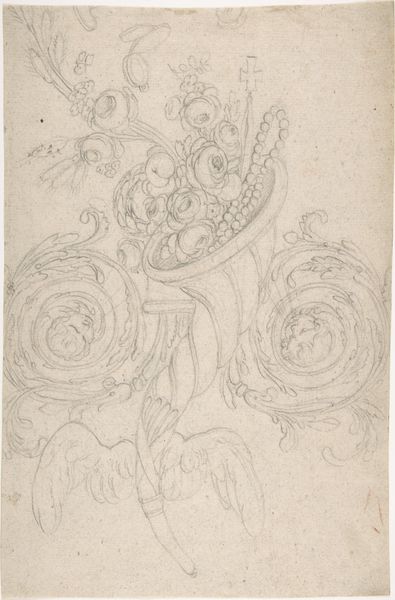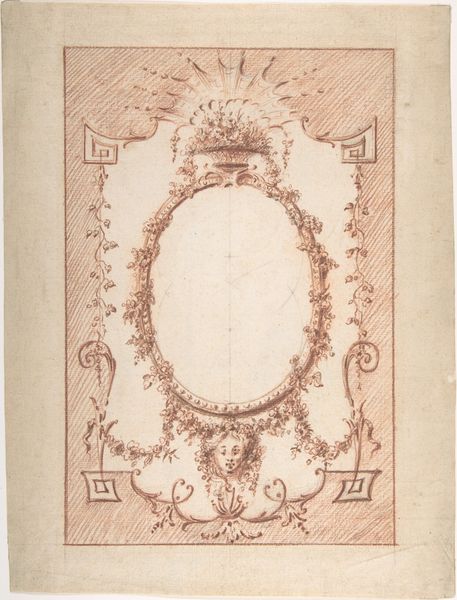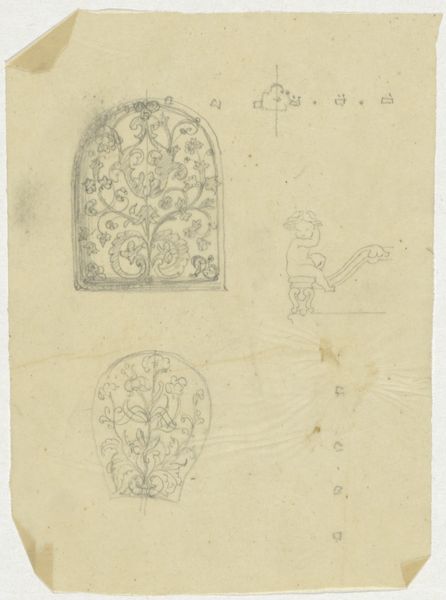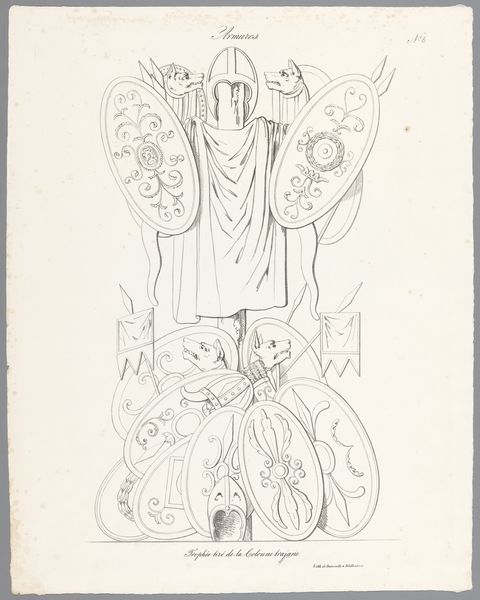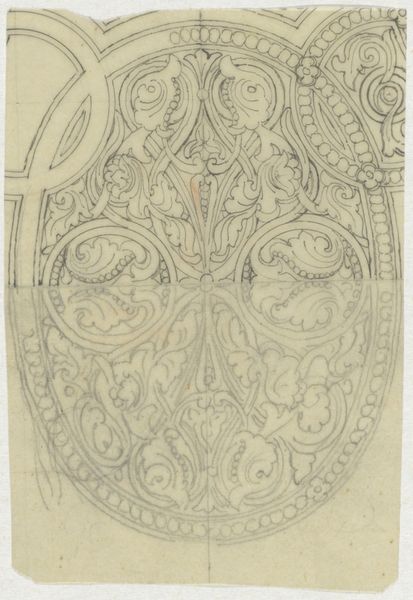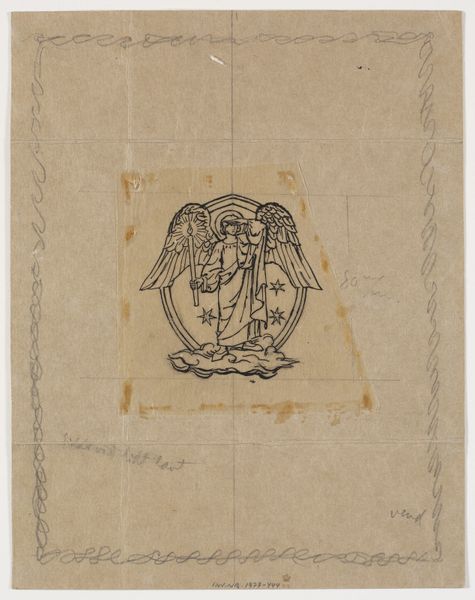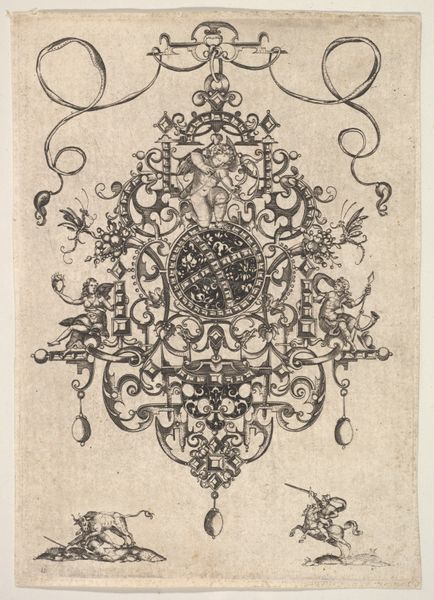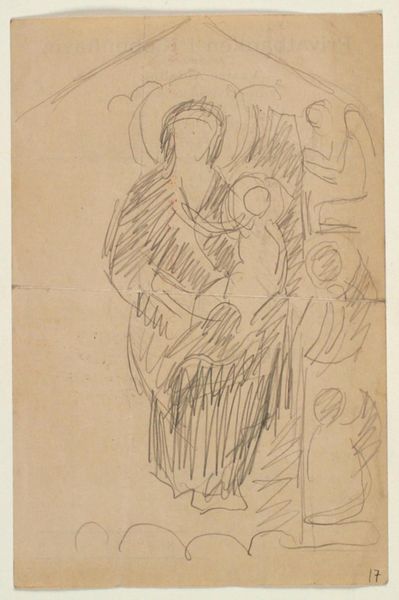
drawing, paper, ink, pen
#
drawing
#
medieval
#
pen sketch
#
figuration
#
paper
#
ink
#
ink drawing experimentation
#
line
#
sketchbook drawing
#
pen
Dimensions: height 200 mm, width 160 mm
Copyright: Rijks Museum: Open Domain
Curator: This is a drawing titled "Vijftiende eeuwse Perzische vaas," dating from 1876-1951 by Theo Nieuwenhuis. It is pen and ink on paper, currently held at the Rijksmuseum. Editor: It's interesting how a sketch of a Persian vase features what looks like a medieval Madonna and Child in the composition, doesn’t it? I’m curious, what do you make of this drawing? Curator: Well, focusing on the material, we have pen and ink, readily available tools for both quick sketches and meticulous renderings. This suggests a dual intention. On one hand, there’s the quick capture of ideas, seen in the gestural lines surrounding the central figures. But look at the focused execution of the Madonna and Child, likely drawing on a medieval icon or print source. Editor: That's a good point about the contrast in the techniques employed. So, would you say Nieuwenhuis is commenting on the process of artistic reproduction here? Curator: Precisely. This work, situated in the late 19th and early 20th century, reflects an interest in both artisanal tradition and mass-produced imagery. The "Persian Vase," in this context, is not merely a decorative object, but perhaps also a reference to global trade and the circulation of artistic motifs. Think of how easily these images can now travel across continents and be consumed by many through widely distributed print media. It raises questions about artistic originality and authenticity in a rapidly industrializing world. Editor: So the artist is really talking about the context of how we create and share art in the world? It's about labor and distribution and accessibility of imagery? Curator: Exactly. And notice how the labor of the drawing—the materiality of ink on paper—is deliberately exposed. It’s not trying to disguise its handmade origins. Instead, it acknowledges the hand of the artist and his act of making. It resists the flawless, mass-produced image. Editor: That gives me a totally new way to appreciate what went into its creation, and how the work isn't divorced from production of art and cultural meaning in society. Curator: Yes, and it urges us to look beyond the surface and question the means by which we create, consume, and assign value to art.
Comments
No comments
Be the first to comment and join the conversation on the ultimate creative platform.
